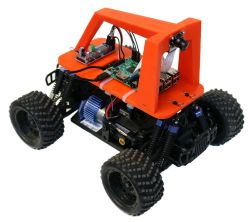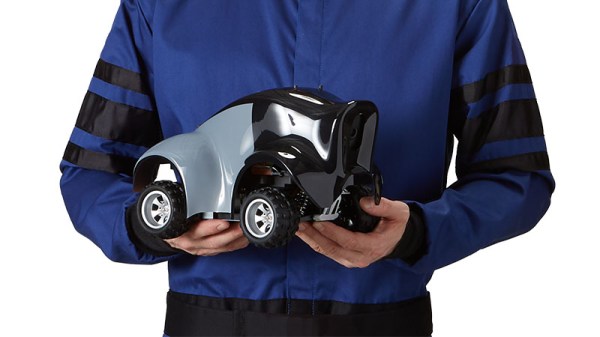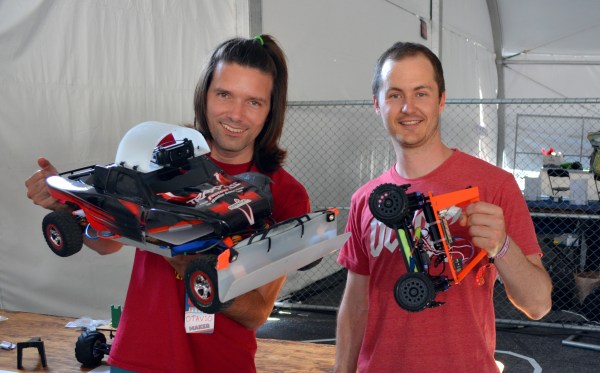Putting autonomous vehicles on public roads takes major resources beyond most of our means. But we can explore all the same general concepts at a smaller scale by modifying remote-control toy cars, limited only by our individual budgets and skill levels. For those of us whose interest and expertise lie in software, Amazon Web Services just launched AWS DeepRacer: a complete package for exploring machine learning on autonomous vehicles.
At a hardware level, the spec sheet makes it sound like they’ve bolted their AWS DeepLens machine vision computer on an 1/18th scale monster truck chassis. But the hardware is only the tip of the iceberg. The software behind DeepRacer is AWS RoboMaker, a set of tools for applying AWS to robot development. Everything from running digital simulations on AWS to training neural networks on AWS. Don’t know enough about machine learning? No problem! Amazon has also just opened up their internal training curriculum to the world. And to encourage participation, Amazon is running a DeepRacer League with races taking place both digitally online and physically at AWS Summit events around the world. They’ve certainly offered us a full plate at their re:Invent conference this week.
 But maybe someone prefers not to use Amazon, or prefer to build their own hardware, or run their own competitions. Fortunately, Amazon is not the only game in town, merely the latest entry in an existing field. The DeepRacer’s League’s predecessor was the Robocar Rally, and the DeepRacer itself follows the Donkey Car. A do-it-yourself autonomous racing platform we first saw at Bay Area Maker Faire 2017, Donkey Car has since built up its documentation and software tools including a simulator. The default Donkey Car code is fairly specific to the car, but builders are certainly free to use something more general like the open source Robot Operating System and Gazebo robot simulator. (Which is what AWS RoboMaker builds on.)
But maybe someone prefers not to use Amazon, or prefer to build their own hardware, or run their own competitions. Fortunately, Amazon is not the only game in town, merely the latest entry in an existing field. The DeepRacer’s League’s predecessor was the Robocar Rally, and the DeepRacer itself follows the Donkey Car. A do-it-yourself autonomous racing platform we first saw at Bay Area Maker Faire 2017, Donkey Car has since built up its documentation and software tools including a simulator. The default Donkey Car code is fairly specific to the car, but builders are certainly free to use something more general like the open source Robot Operating System and Gazebo robot simulator. (Which is what AWS RoboMaker builds on.)
So if the goal is to start racing little autonomous cars, we have options to buy pre-built hardware or enjoy the flexibility of building our own. Either way, it’s just another example of why this is a great time to get into neural networks, with or without companies like Amazon devising ways to earn our money. Of course, this isn’t the only Amazon project trying to build a business around an idea explored by an existing open source project. We had just talked about their AWS Ground Station offering which covers similar ground (sky?) as our 2014 Hackaday Prize winner SatNOGS.














